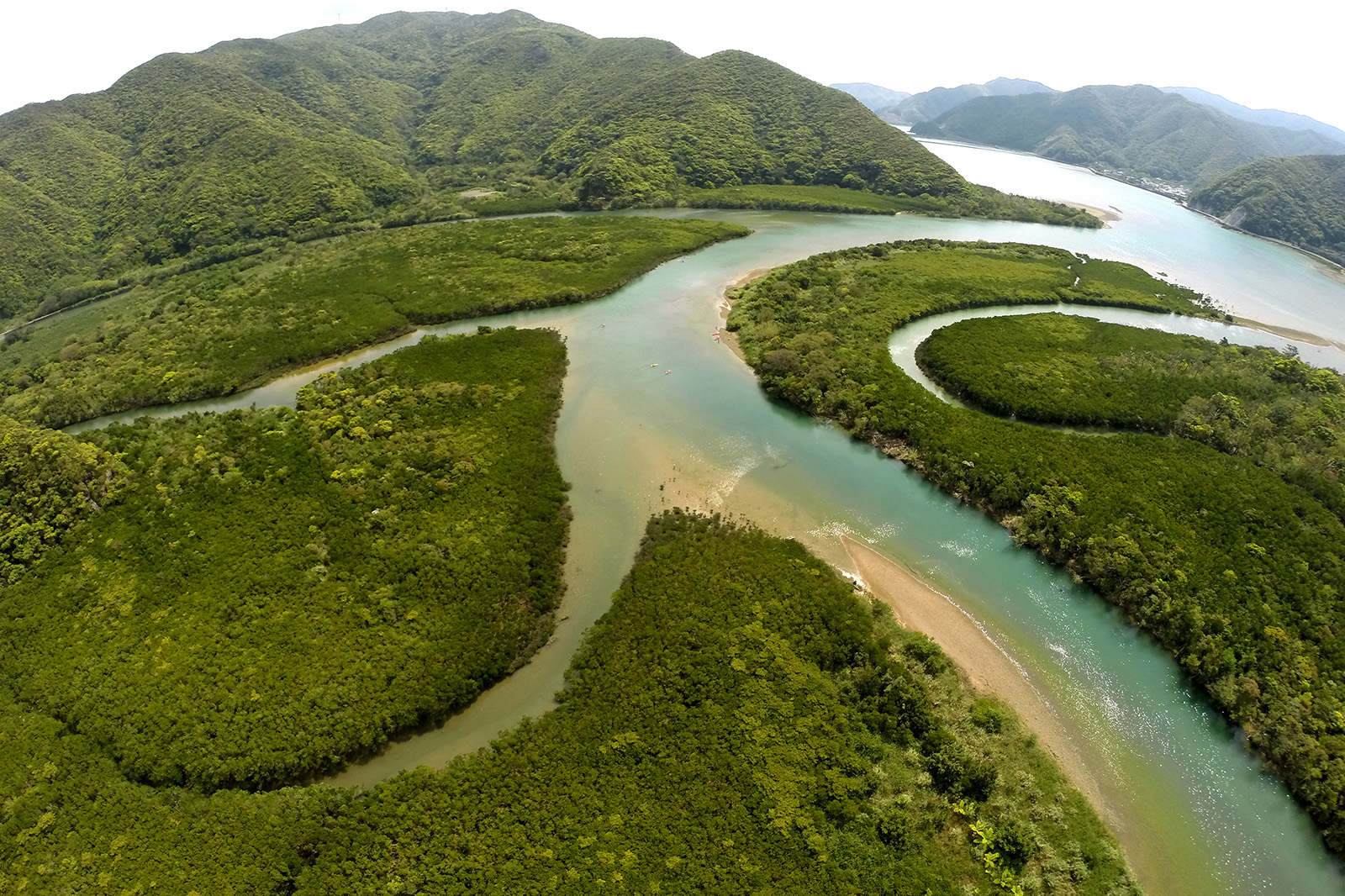
Amami's Rivers
Mangroves
Mangroves are a general term used to describe Rhizophoraceae distributed from subtropical to tropical regions. Japan’s second largest mangrove forest after Iriomotejima of Okinawa grows on over 71 hectares of estuaries in Amami Oshima’s southern interior. Over 300 kinds of living species inhabit the brackish water in a massive swath of Ohirugi (Large-Leafed Orange Mangrove or Bruguiera gymnorhiza) and a large-scale Mehirugi (Kandelia, or Kandelia obovata) community as both species thrive at their northern limit. The Ryukyu Ayu (Ryukyu Sweetfish, or P. altivelis ryukyuensis), Okinawa Anajako (Mud Lobster, or Thalassina), Nokogiri-gazami (Mangrove Crab, or Scylla), Minami Tobihaze (Barred Mudskipper, or Periophthalmus argentilineatus), Minami Kometsuki-gani (Soldier Crab or Mictyris brevidactylus), and a Shiomaneki species (Fiddler Crab, or Uca arcuata) co-exist here with many other wild birds and young fish, each claiming a place in the food chain.
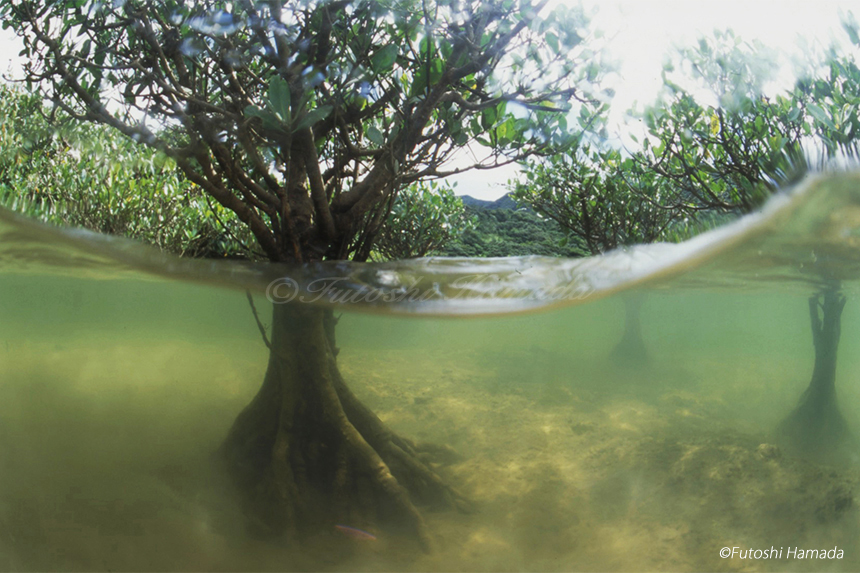
Mangroves as seen from underwater
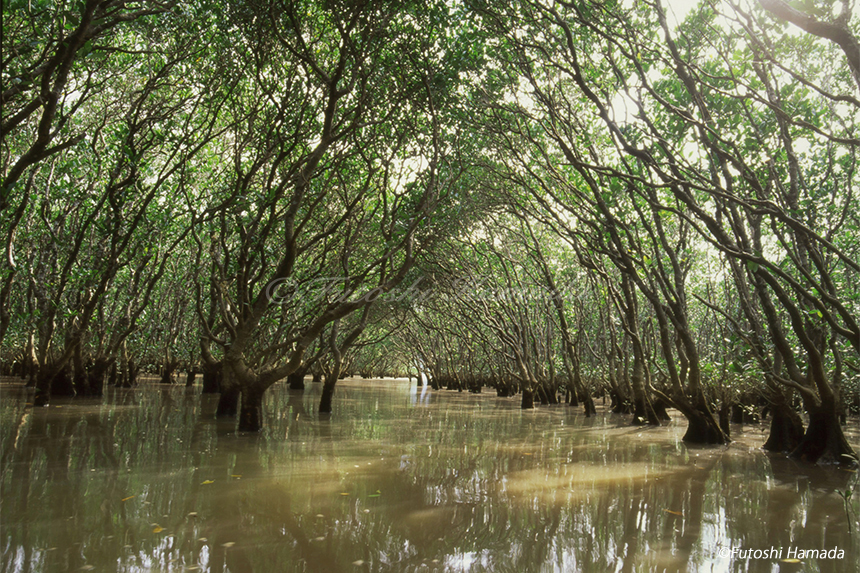
Mangroves at low tide
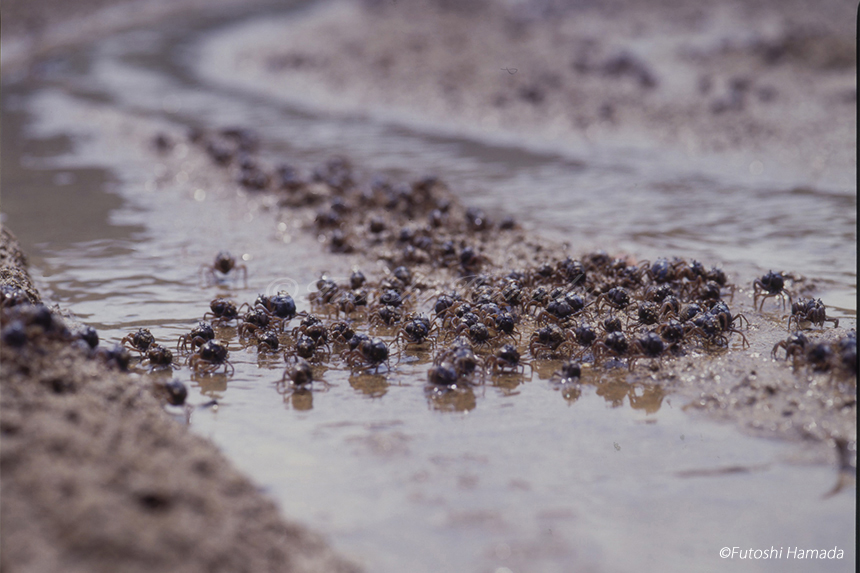
Southern crabgrass (Digitaria ciliaris) advances

Barred mudskipper (Periophthalmus argentilineatus)

Fiddler crab (Uca arcuata)
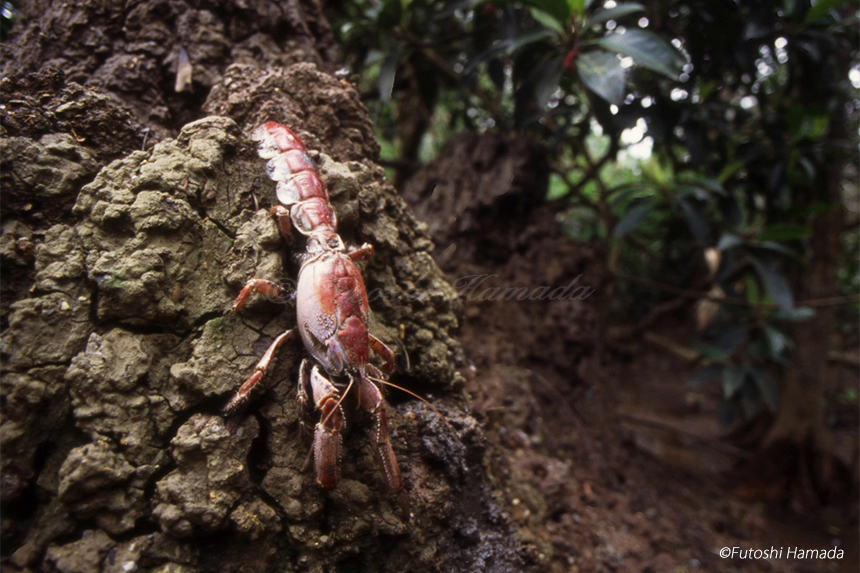
Mud lobster (Thalassina)
Photos/text by Horizon Editorial Office

